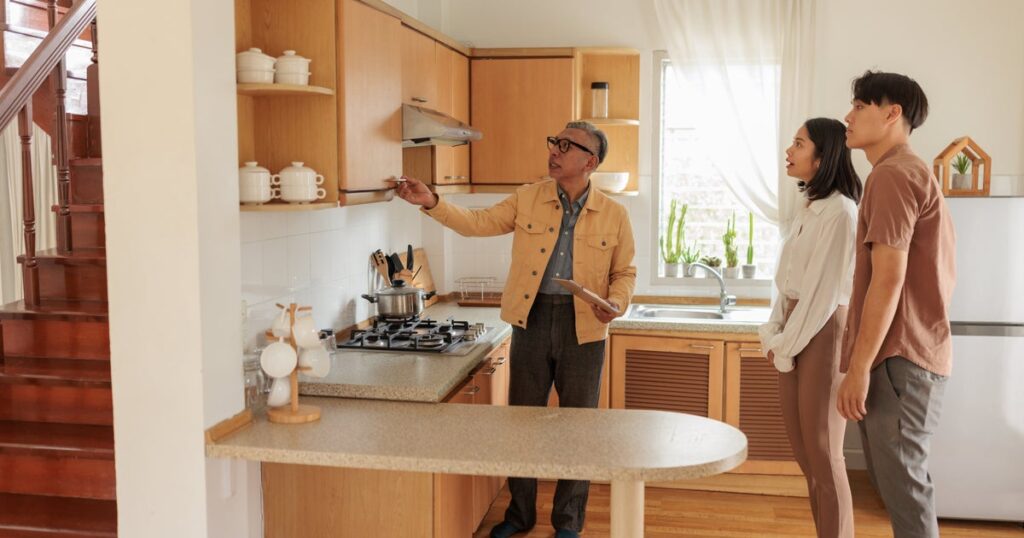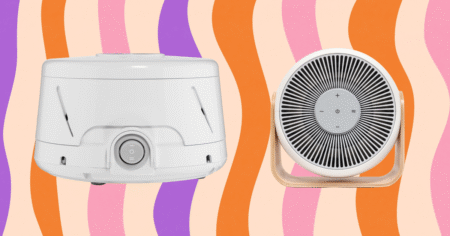Our homes are meant to be a safe space away from the outside world. Unfortunately, threats can enter even when we do all that we can to keep our homes protected.
One scary threat in our homes is carbon monoxide poisoning, which kills roughly 400 Americans each year and hospitalizes another 14,000.
“Carbon monoxide is an odorless and tasteless gas that is produced in fires, furnaces, space heaters, stoves, automobiles and even boats,” said Dr. Karra Manier, an emergency medicine physician at Cedars-Sinai Medical Center in California.
It comes from the combustion of materials like gas, charcoal, wood and propane, added Ali Boris, an indoor air quality specialist at the Washington State Department of Health.
“When the carbon monoxide builds up in a space, we can be exposed to high levels of it, even semi-enclosed spaces like garages or loading docks,” Boris said.
It can happen if you’re working on a running car, if your gas stove burner doesn’t ignite and is left on, if your furnace has a leak, if a boat engine isn’t properly installed or exhausted and in many more situations.
“When these devices are burning in areas without enough oxygen, it produces the carbon monoxide, and when it gets inhaled, this gas replaces oxygen within our blood and reduces the amount of oxygen that is delivered to our tissues, and so that’s what’s causing the poisoning and the death of our cells,” Manier explained.
So, your body isn’t getting the oxygen it needs when you’re inhaling carbon monoxide.
Since carbon monoxide is odorless and tasteless and colorless, you need a device to detect it (more on that below), Boris said. This makes being aware of the signs of carbon monoxide poisoning crucial, along with the behaviors you can follow to keep yourself and your loved ones safe. Here’s what to know:
There are physical signs of carbon monoxide poisoning.
“Carbon monoxide poisoning actually has a wide range of symptoms, but it most commonly presents as a headache, and it can also cause flulike symptoms such as nausea, fatigue, vomiting, confusion and then also loss of consciousness,” Manier said.
These symptoms are pretty vague (other than a loss of consciousness) and can also be signs of other ailments like dehydration, the flu and even a bad hangover. But, there are a few ways to suss out if it is carbon monoxide that you’re dealing with.
“One indication of carbon monoxide in a space is that you might also notice the symptoms go away when you leave the area,” Boris said.
Also, if other people or pets in your home have the same symptoms, it’s also a sign of carbon monoxide poisoning, Manier noted.
If you do suspect you have carbon monoxide poisoning, you should quickly seek emergency medical attention and get fresh air.
Symptoms vary depending on the level of exposure and how long you’re breathing in the contaminated air. For instance, low-level exposure can cause chronic headaches and a higher risk of cardiovascular health impacts, Boris said.
Elderly people, infants and folks with certain conditions like heart disease and anemia are at higher risk, according to the Centers for Disease Control and Prevention.
If you suspect you have carbon monoxide poisoning, go outside and into fresh air.
″[Carbon monoxide] can kill in just minutes if the levels are high enough,” Boris said.
If you experience these symptoms or you suspect there’s a carbon monoxide leak, get outside and into fresh air immediately.
Don’t fall asleep or ignore the problem, she added. “Call 911 if you think there’s a real concern,” Boris said. It’s important to get medical attention if you think you have carbon monoxide poisoning.
“If you have nonemergency poisoning concerns, you can call your local poison center,” Boris noted. They can walk you through what you need to do to keep your home clear of carbon monoxide.
Marcia Straub via Getty Images
To keep your home safe, install carbon monoxide detectors.
To protect yourself and your loved ones from carbon monoxide poisoning, you should install carbon monoxide detectors in your home, both Boris and Manier said.
″[A carbon monoxide detector] is different from a smoke detector, but installing this in every level of your home, and then monitoring it monthly, can help detect any leaks or exposure,” Manier noted. It’ll beep if carbon monoxide is detected in your home.
Simply installing a carbon monoxide detector and forgetting about it isn’t enough, though.
You should check your monitors throughout the year to make sure they’re working properly and don’t need new batteries, Boris said. The U.S. Fire Administration recommends checking monitors monthly, and the CDC says you should check the batteries when you change the clocks in the spring and fall.
You should also follow any and all maintenance and cleaning instructions from the manufacturer to keep them up to code.
And get your burning appliances checked for carbon monoxide leaks.
Manier recommends that folks get their burning appliances, including furnaces, heaters, gas ovens, fireplaces and space heaters, inspected by a professional, particularly during the colder months when they’re frequently used.
Boris said it’s a good idea to do this check annually to make sure everything is functioning properly and vented correctly to the outside.
Lastly, don’t use burning appliances that aren’t meant for indoor use in enclosed spaces or spaces that aren’t properly ventilated.
Burning appliances that aren’t meant for indoor use — things like charcoal burners, propane stoves, camping lanterns and more — should only be used outside or in spaces with proper ventilation, Boris said.
Even using these items in partially enclosed spaces can be dangerous, Boris said. You always want to make sure there is complete or proper ventilation if you are running a burning appliance.
Manier noted that emergency medicine physicians see tens of thousands of visits each year due to carbon monoxide poisoning, making it important to ensure you have carbon monoxide detectors in your home, that you’re aware of the signs of poisoning and that your burning appliances are functioning properly and ventilated properly.
Want a carbon monoxide detector? Check out these highly reviewed options.
HuffPost and its publishing partners may receive a commission from some purchases made via links on this page. Every item is independently curated by the HuffPost Shopping team. Prices and availability are subject to change.

A combination smoke and carbon monoxide detector
This standalone combination alarm detects both smoke and carbon monoxide in the air and displays all vital readings and battery life on the light-up LCD screen. It’s fully battery-operated and built with a sealed lithium battery that provides 10 years of continuous power. There are also interconnected models available if you have a larger home or live with loved ones who are hard of hearing.

A smart Google Nest smoke and carbon monoxide detector
For a fully intelligent and multi-faceted detection system, you may be interested in the Google Nest Protect, an alarm that features a split-spectrum sensor that announces both smoldering and rapid-burning fires, as well as a sensor that detects carbon monoxide.
Seamlessly merging with Google Nest’s smart home operating system, you can have detection alerts sent directly to an app on your phone and hush alarms without having to lift a finger. Plus, when it’s time to change the batteries, the Protect will stop glowing green without any of that annoying chirping, though its battery system lasts for up to 10 years. It’s even been outfitted with a motion-detection night light that emits a soft glow whenever someone walks beneath it.
Read the full article here








